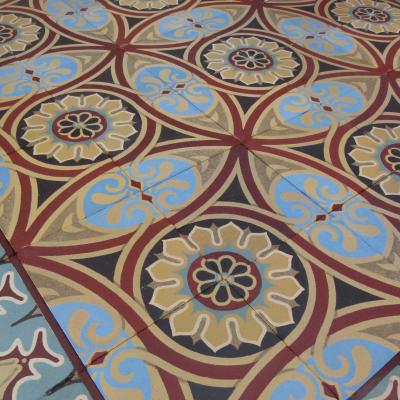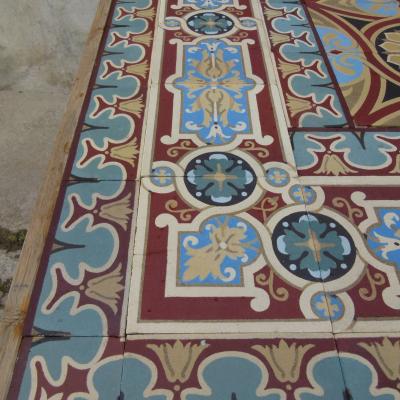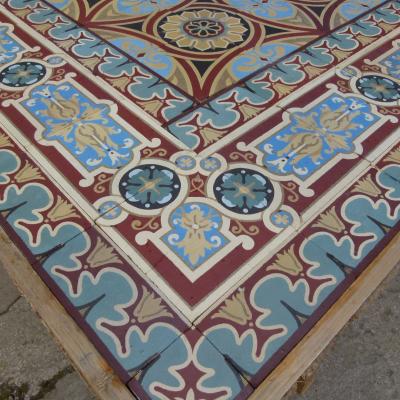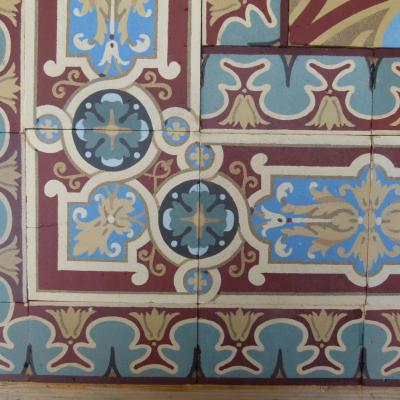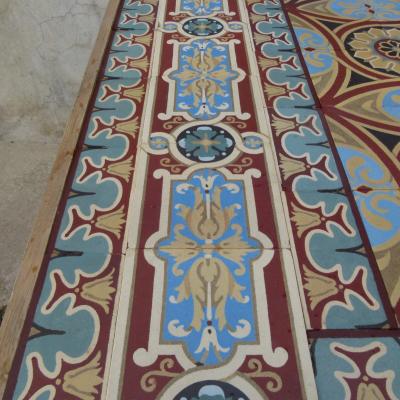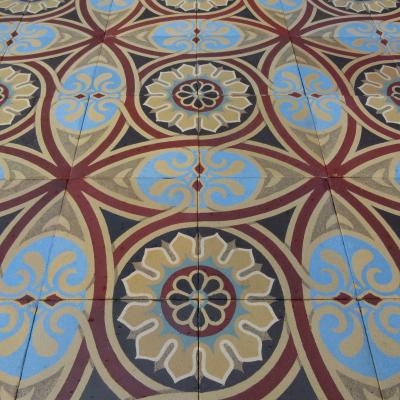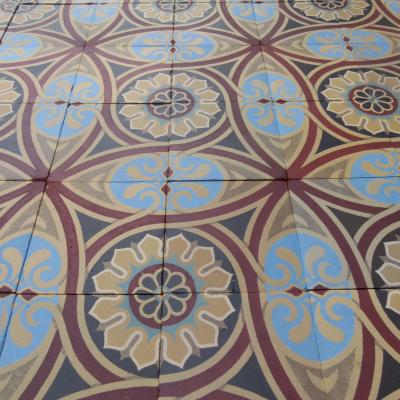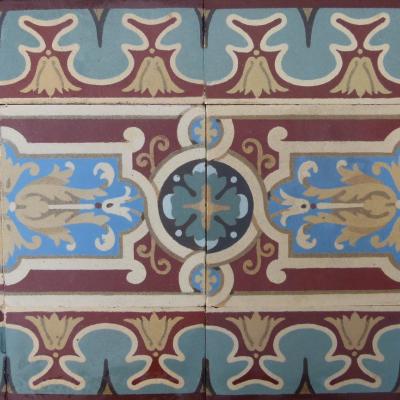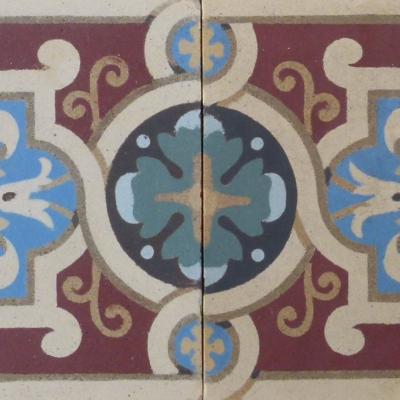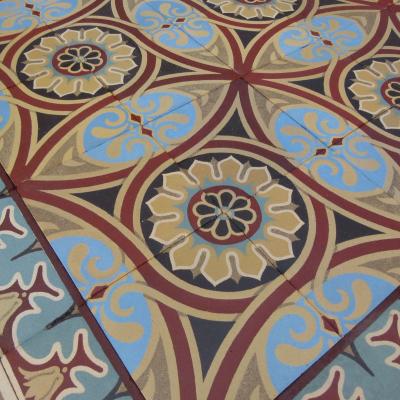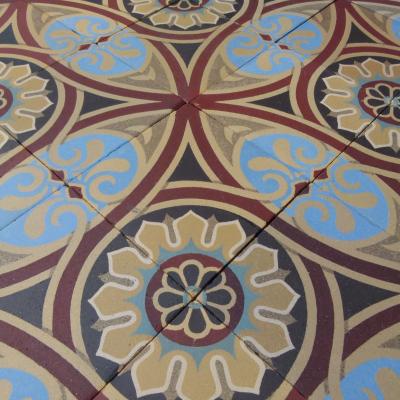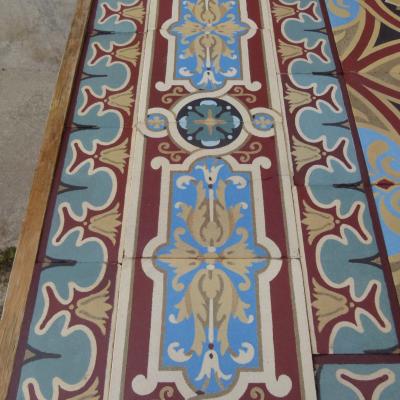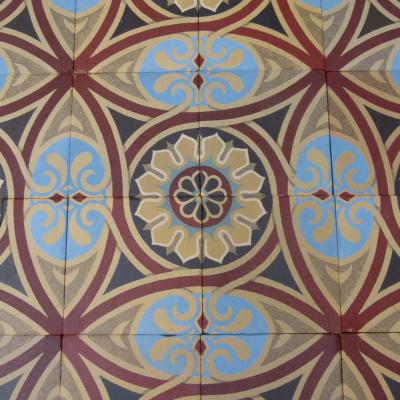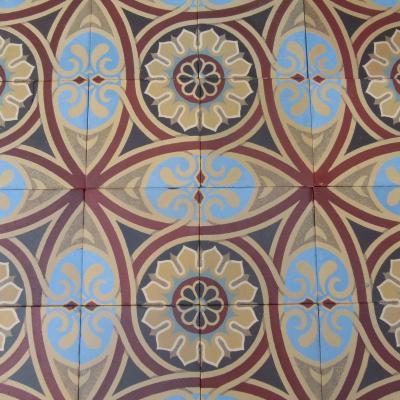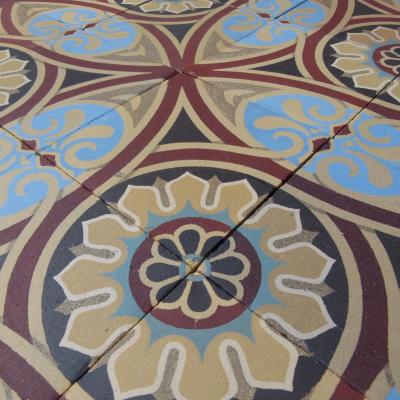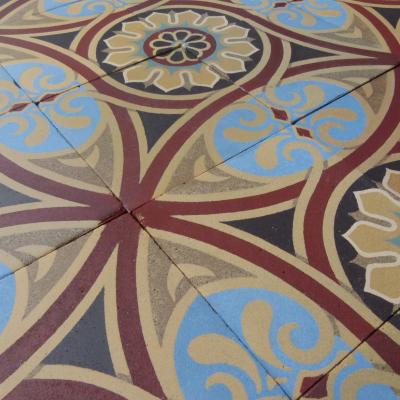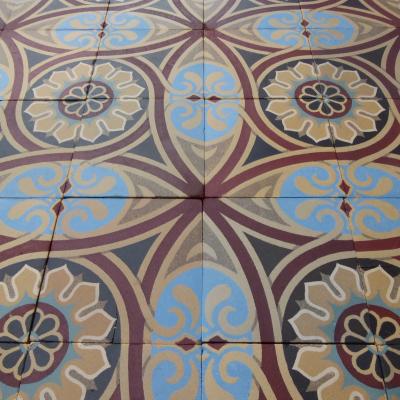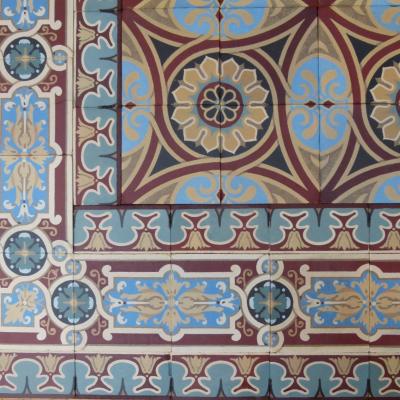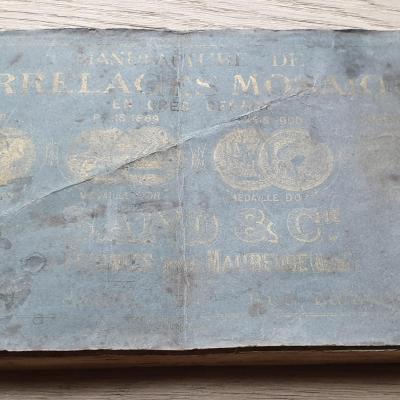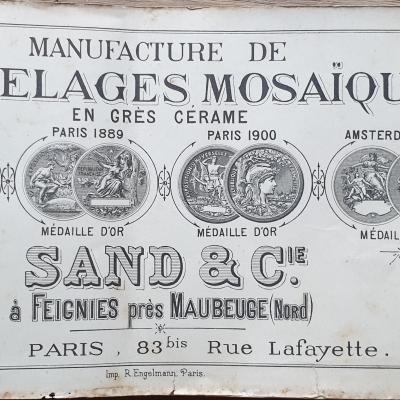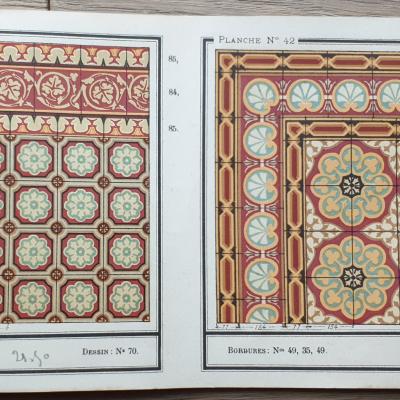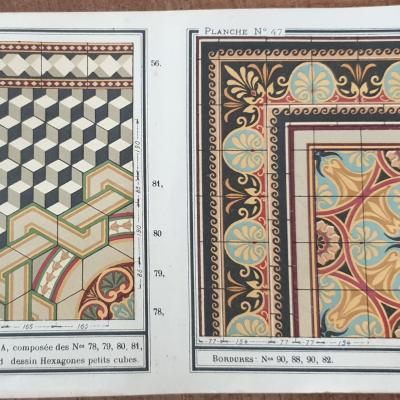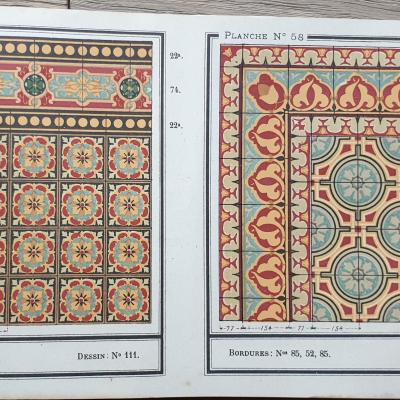Early 20th century Sand & Cie French ceramic c.20m2
An impressive and rare antique French ceramic manufactured by Sand & Cie, Feignes at the turn of the last century. We include in the photo gallery scans from their period catalogue showing the field, large border and half size borders.
This is a quality ceramic of 15.5cm sq, 15mm thick tiles weighing over 1.1kgs / 2.4lbs each.
The motif tessellation, across four tiles, is impressive in its design and exquisite in its almost hand-painted detail as the high resolution photographs show. The floor has cleaned well of its old mortar, joints and surface dirt; colours are crisp and while a very small number of tiles display edge nibbles expected of a floor of this age it is in superb condition.
Totalling c.20m2 / 215 sq feet this indulgent ceramic, embracing a same size and half size border (the design of which embraces all of the DNA of early art nouveau styling), will want to be the hero in any room as a unique and beautiful statement piece.
A highly fired tile it can be laid with underfloor heating systems and being highly fired can be laid inside or outside of the home.
We would be happy, without obligation, to look at the potential fit and recommend the best aesthetic lay for this floor in your chosen area.
Tile quantities:-
FIELD TILES - 655 - 15.75m2 / 170 sq ft.
LARGE BORDERS - 105 plus 3 corner tiles* - 2.6m2 / 28 sq ft. or 16.8 linear metres / 55 sq ft.
SMALL BORDERS - 145 plus 1 corner tile* - 1.75m2 / 18.8 sq ft. or 22.5 linear metres / 74 linear ft.
* The missing border corners can be mitre cut by the tiler from the regular borders.
NOTE
Antique tiles were most commonly made in single or two tile moulds. Before current computer automation methods their moulds were made my hand and the colour slips mixed by eye. Kiln temperatures could also be variable, as could the firing time. The result is that often tiles display subtle size and thickness variations and there can be tonal variations in colours, owing to the slip mixing and/or firing time. All of this makes these handmade tiles unique and adds to their charm. Some floors display their subtle variations in size and tones, some not, but when photographing we always take a random section of the floor so that it is representative of the whole. A tiler should always dry lay a section of the tiles to familiarise himself with them before starting to fix lay.
MAD117



